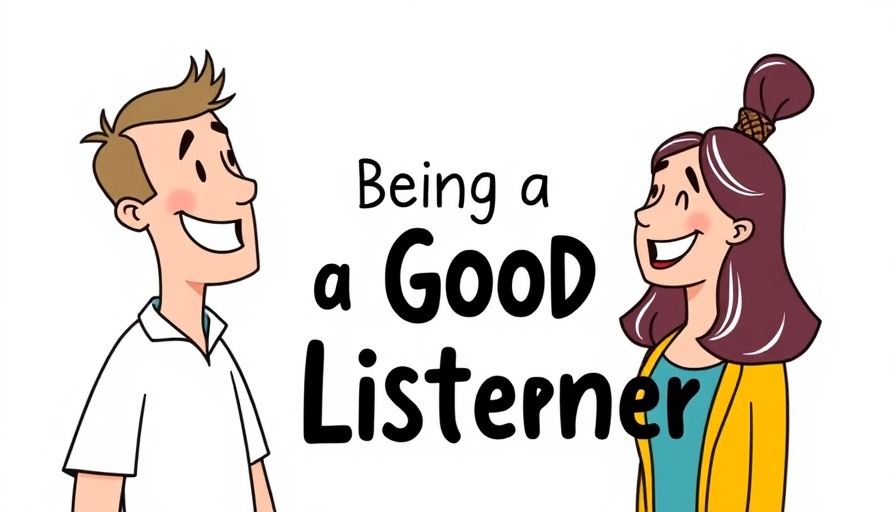
Understanding the Essence of a Good Listener
In an age where distractions abound, becoming a good listener has never been more critical, especially for married adults raising children in bustling cities like Denver. Listening goes beyond simply hearing words; it involves actively engaging with someone's thoughts and emotions. A good listener encourages deeper conversations and helps both parties understand each other better.
The First Quality: Inquiring with Care
A hallmark of effective listening is the ability to ask thoughtful questions. Imagine sitting down with your spouse after a long day. Rather than diving straight into your own day’s events, asking, “What’s on your mind?” invites your partner to share their feelings. This small, gentle push can help uncover worries and make each person feel valued in the conversation. According to research from the London School of Life, quality inquiries can clarify emotions and pave the way for deeper understanding and connection.
Going Beyond Small Talk: The Bigger Picture
Good listeners help you see beyond the immediate situation. Instead of merely reciting day-to-day happenings, a skilled listener connects snippets of conversation to the broader narrative of your life. This can be invaluable, especially in the context of family dynamics and challenges in parenting. For example, discussing frustrations about a child’s behavior can turn into revelations about family expectations and values, leading to meaningful discussions and solutions.
Creating a Safe Space: Uniqueness and Vulnerability
Listening well also means accepting the unique struggles each person faces. For adults managing careers and children, vulnerability can be a double-edged sword. A good listener offers validation rather than judgment, ensuring that conversations can remain open and honest. Signals of empathy, such as gentle sounds like 'MMMMM...' or phrases that acknowledge someone’s struggle, encourage expression without fear of backlash.
Disagreement vs. Criticism: Understanding Boundaries
It's essential for a good listener to differentiate between disagreement and criticism. This quality establishes a safe environment, especially important in marriages. Disagreements are natural; however, the right listener reassures their partner of unconditional support regardless of differing opinions. This support fosters affection and trust within the relationship, allowing it to flourish rather than stifle.
Practical Steps to Enhance Listening Skills
Being a good listener is a skill that can be honed through practice. Here are some practical steps for parents in Denver to improve their listening capabilities:
- Practice active listening: Make a conscious effort to listen without formulating your response while the other person speaks.
- Engage in reflective listening: Paraphrase what the other person has said to confirm understanding.
- Set aside distractions: During conversations, put down devices and turn off the TV.
- Use nonverbal cues: Nod or maintain eye contact to show engagement and empathy.
Why Listening Matters in Family Dynamics
In today’s fast-paced world, the quality of our conversations can dictate the overall health of our family relationships. By embracing these qualities of a good listener, couples can forge stronger connections, navigate conflicts, and impart critical listening skills to their children. In doing so, family members cultivate an enriching environment where everyone feels heard and appreciated.
Conclusion: Take Action Today
In conclusion, being a good listener is pivotal in nurturing relationships with our spouses and children. It’s not merely a passive exercise but a proactive approach that enhances connectivity and empathy. Commit today to practicing these listening qualities and watch how open communication transforms your family dynamics. Start small, and soon you’ll be creating a more harmonious household.
 Add Row
Add Row  Add
Add 




Write A Comment